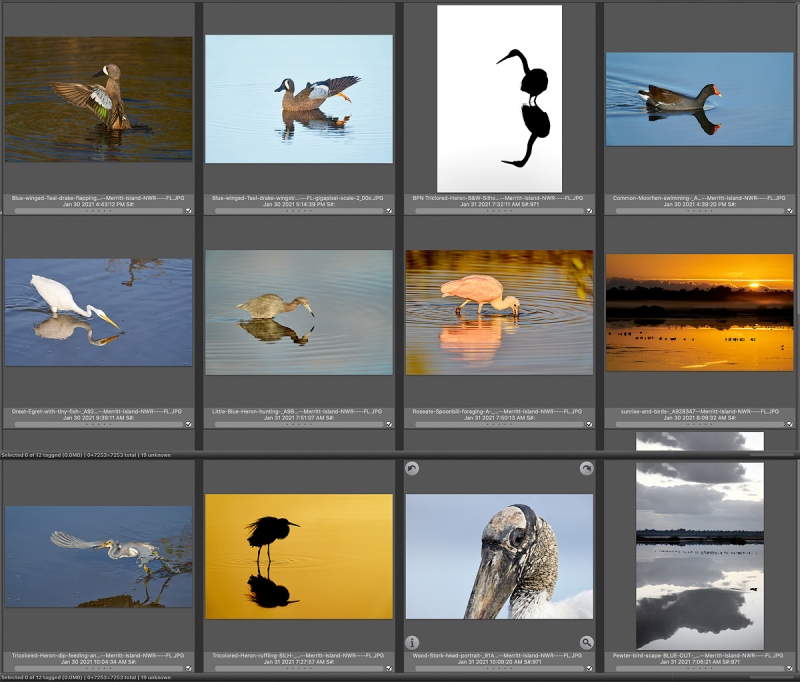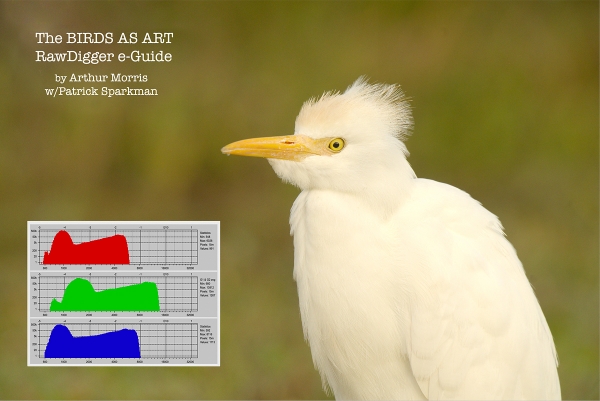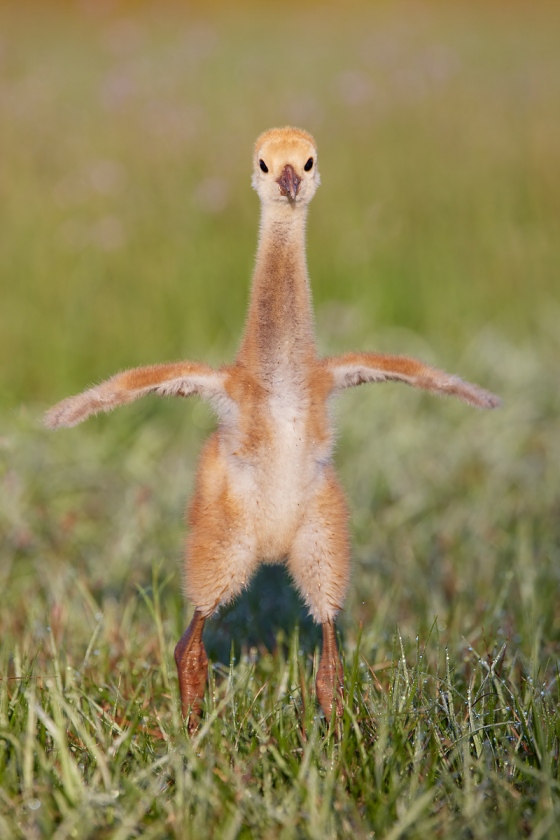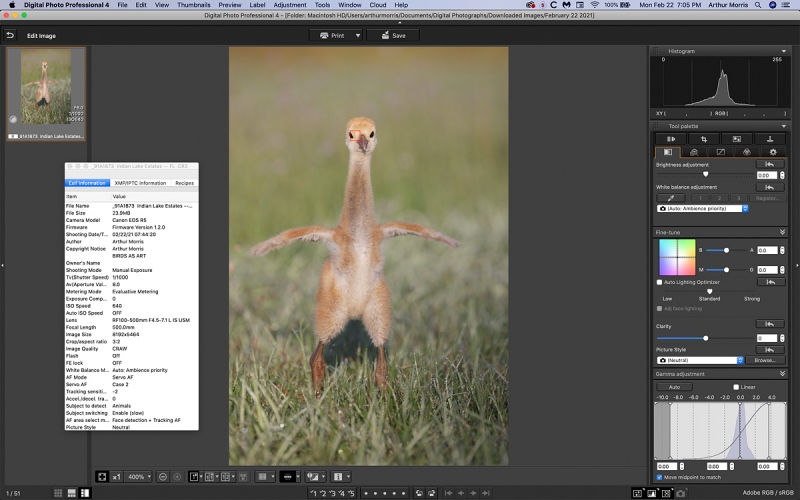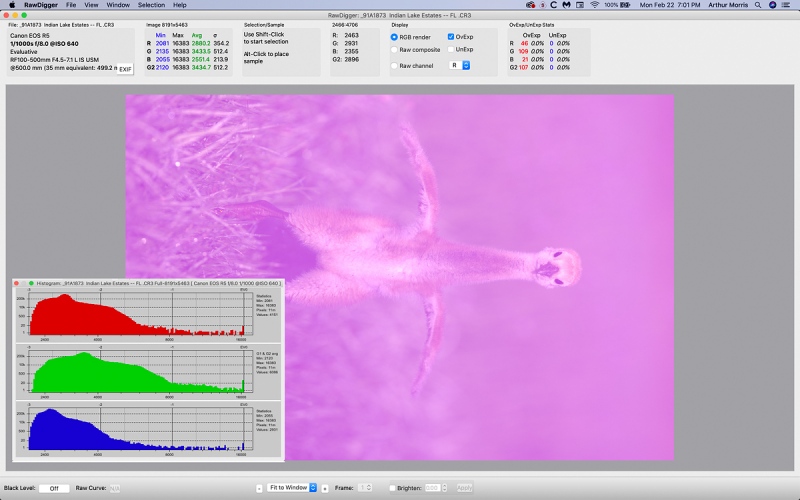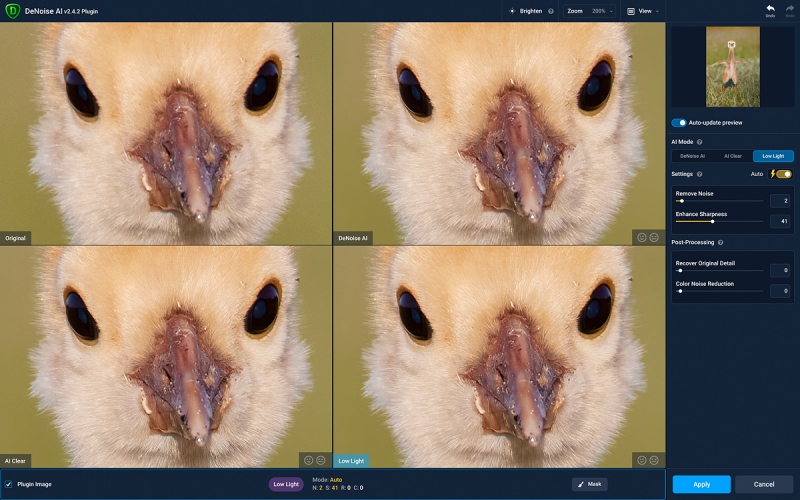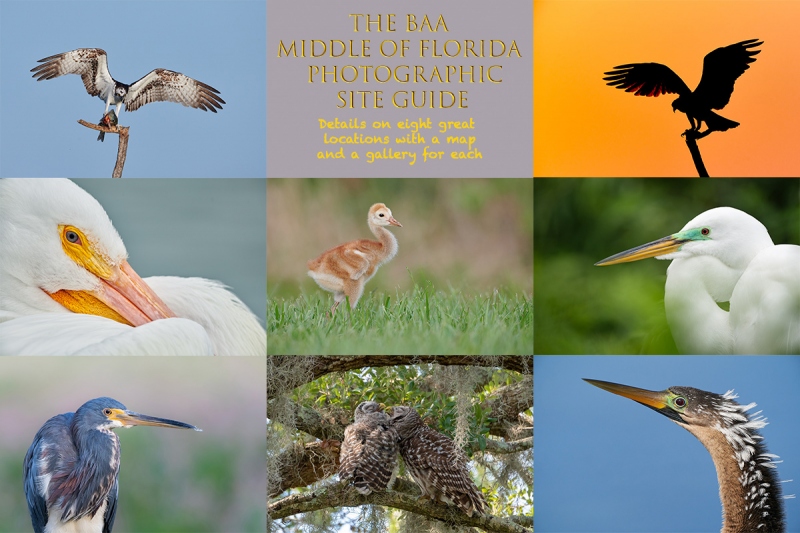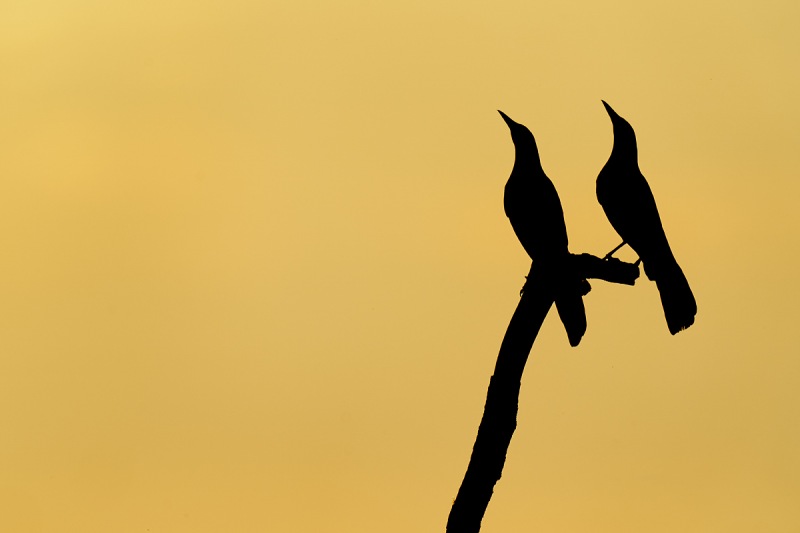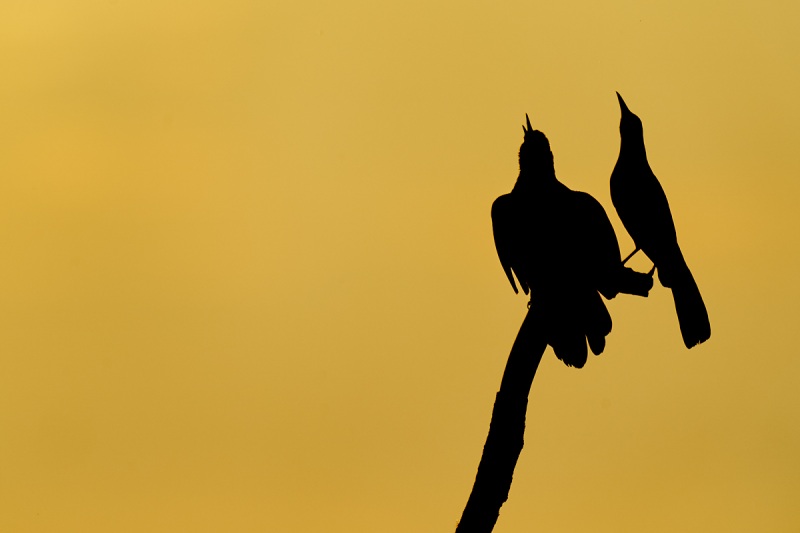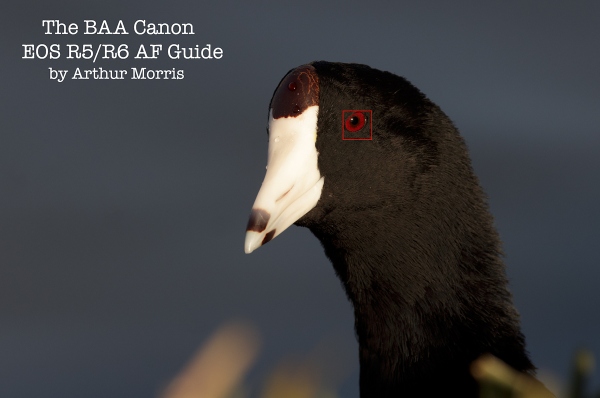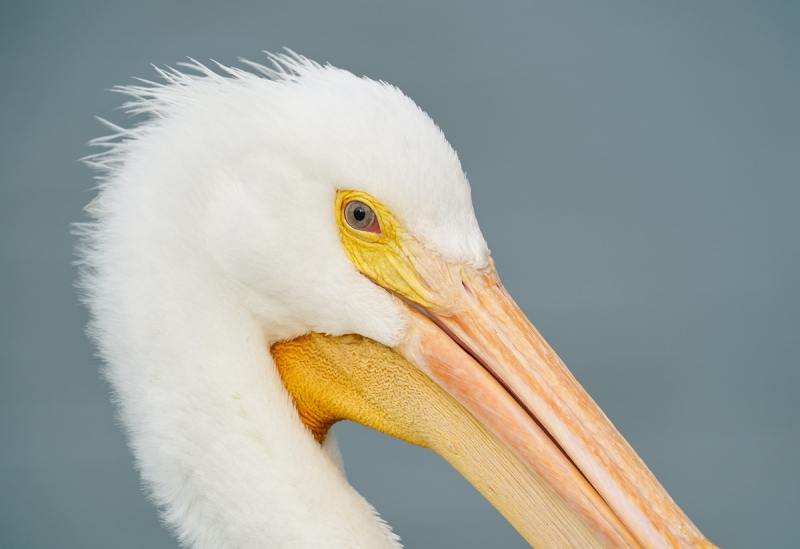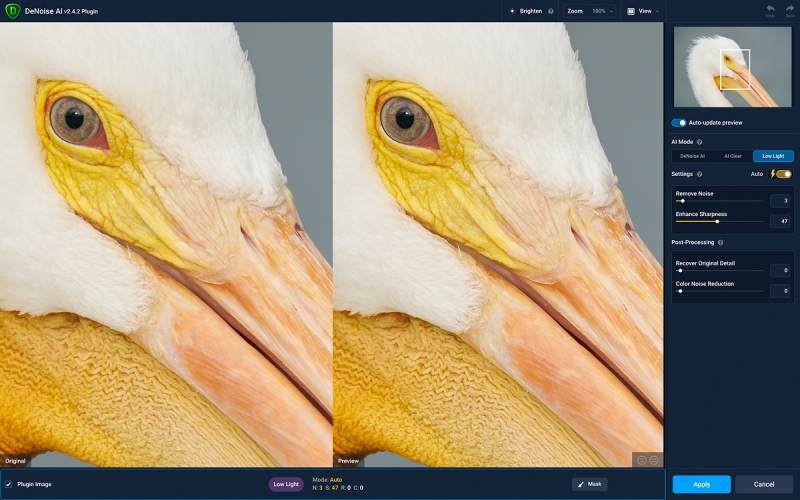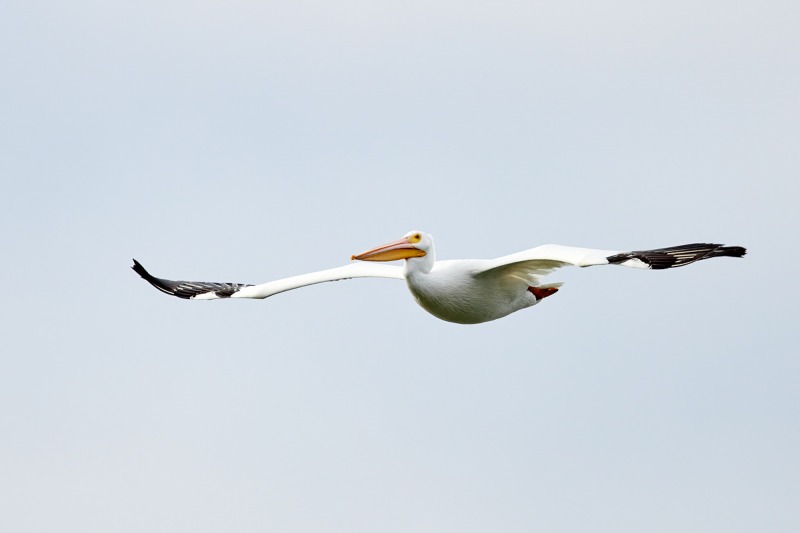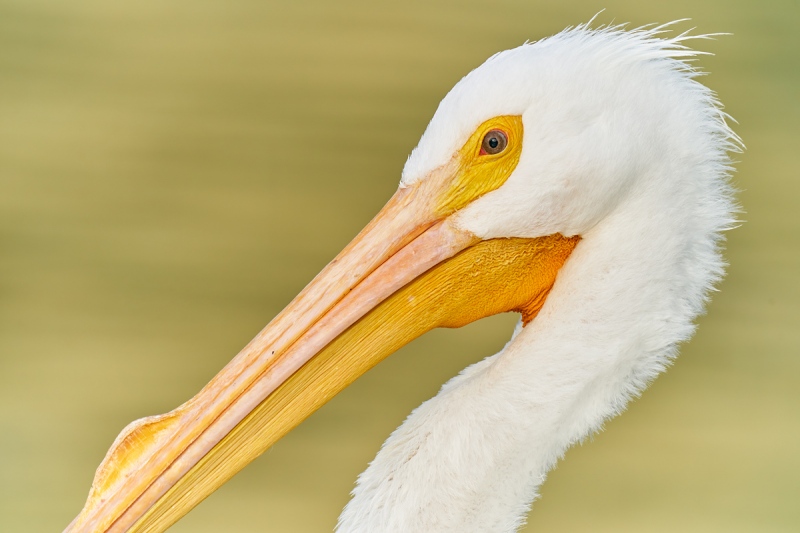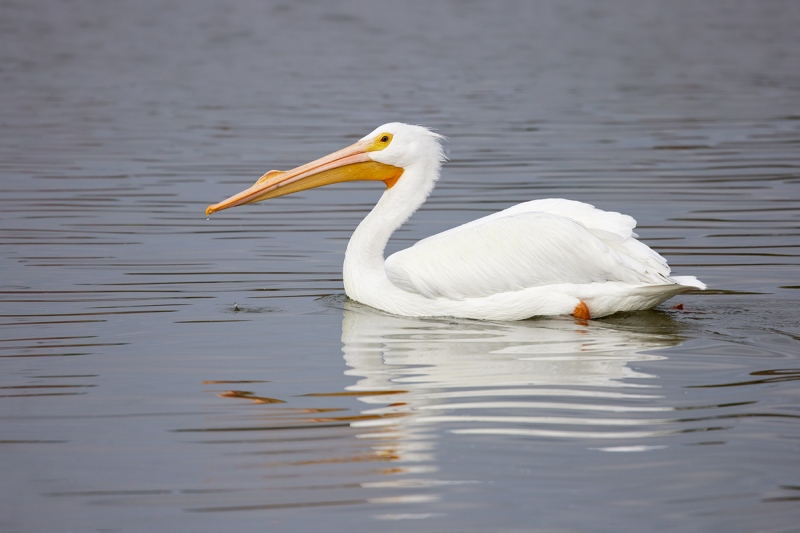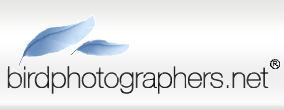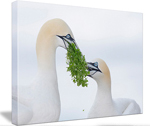February 23rd, 2021
|
|
|
All of the images (plus lots more) were created on a very short visit at the end of January. Click on the card to enjoy a larger version.
Merritt Island NWR IPT card
|
Merritt Island NWR IPT
Merritt Island NWR IPT. 3 1/2 DAYS. MON 15 MAR thru the morning session on THURS 18 MAR 2021. $1499 includes three lunches. Limit: 6. Openings: 3.
When I visited — and later lived — in Deltona, FL, I made many trips to Black Point Wildlife Drive and environs. On a recent visit, I did quite well. The birds were much tamer than I remembered. I know the place well. Early spring was always best. There are tons of ducks, and wading birds including and especially both ibises. It can be great at sunrise with large flocks of shorebirds, waterfowl, ibises, and American White Pelicans filling the skies. We should get to do lots of flight photography on the causeway. At least a few good chances with Roseate Spoonbill are possible.
A $499 deposit is required to hold your spot for this IPT. You can send a check (made out to “BIRDS AS ART) to us here: BIRDS AS ART, PO Box 7245, Indian Lake Estates, FL, 3385, or call Jim or Jennifer at the office with a credit card at 863-692-0906. Your balance, payable only by check, is due immediately after you sign up. If you have any questions, please feel free to contact me via e-mail. If you cancel due to COVID 19 concerns, all of your payments will be refunded.
What’s Up?
After spending ten minutes with the crane family at the north end of the north field, I drove to the South Peninsula to set up a road-kill cafe. That done, I pulled my SUV into position so that I could do some work on the R5 Camera User’s e-Guide while waiting for the vultures to come to breakfast. I set the exposure, put the rig on the passenger seat, an grabbed my laptop. Opps. Where are my glasses? . Did I leave them at home or did they fall out of the car at my first stop near the end of the North Field? I called Jim and asked him to check around for my glasses. No luck there. I had a spare pair in the glove box so I went to work on the guide and got some good stuff done.
Usually, I sense a vulture circling and am able to make some good flight images from the front seat. I was concentrating hard on the guide (while working on the Q Button section). I glanced out at the bait only to discover that I had missed eleven vultures flying into the perfect wind. Bummer. :). I had very few chances on flight after that, so I set up the SONY 600 GM with the 2X and the a9 ii on the tripod in the vehicle, moved the car closer to the hungry birds, and made a slew of nice Black Vulture head portraits along with a few frames of one chowing down on the raccoon’s neck and another enjoying some long, skinny intestines.
At about 9:30, I drove back to the North Field to look for my glasses. I did not want to run them over with the car so I parked well away from the search area. I began walking a short by long grid while staring at the ground. When I was almost done, I looked up at the sky and said, “Elaine, help me out here.” My late-wife has bailed me innumerable times in similar (and even in dangerous) situations. I was about ready to give up when I decided to walk the grid long by short. As I turned, I looked down to my left and saw my glasses staring up at me. “Thanks, babe!”
After brunch I got some more work done on the guide, napped, did my bursts, and enjoyed an easy swim. Sunset was grey so I never got down to the lake after an early-as-usual dinner.
If you would like to explore the possibility of a morning In-the-Field Instructional session here at ILE for crane chicks or at Lakeland for American White Pelicans, please contact me via e-mail or try me on my cell at 863-221-2372.
Today is Tuesday February 23 2021. The forecast for this morning is for partly cloudy turning sunny with northwest winds. That is a bad forecast for bird photography. I peeked out the door at 7:05am and saw that it is dead-clear in the east. Sunny with northwest winds is worse for bird photography than partly-cloudy with northwest winds so I am gonna get down to the lake ASAP before the wind picks up. Have a great day.
This blog post took about two hours to prepare and makes sixty-five days in a row with a new one. Please remember …
Please Remember
With income from IPTs now at zero, please, if you enjoy and learn from the blog, remember to use one of my two affiliate programs when purchasing new gear. Doing so just might make it possible for me to avoid having to try to get a job as a Walmart greeter and will not cost you a single penny more. And if you use Bedfords and remember to enter the BIRDSASART code at checkout, you will save 3% on every order and enjoy free second-day air shipping. In these crazy times — I am out at least forty to sixty thousand dollars so far due to COVID 19 (with lots more to come) — remembering to use my B&H link or to shop at Bedfords will help me out a ton and be greatly appreciated. Overseas folks who cannot order from the US because of import fees, duties, and taxes, are invited to help out by clicking here to leave a blog thank you gift if they see fit.
|
|
RawDigger e-Guide with Two Videos
|
The RawDigger e-Guide with Two Videos
by Arthur Morris with Patrick Sparkman
The RawDigger e-Guide was created only for serious photographers who wish to get the absolute most out of their raw files.
Patrick and I began work on the guide in July 2020. At first we struggled. We asked questions. We learned about Max-G values. We puzzled as to why the Max G values for different cameras were different. IPT veteran Bart Deamer asked lots of questions that we could not answer. We got help from RawDigger creator Iliah Borg. We learned. In December, Patrick came up with an Adapted Histogram that allows us to evaluate the exposures and raw file brightness for all images created with all digital camera bodies from the last two decades. What we learned each time prompted three complete beginning to end re-writes.
The point of the guide is to teach you to truly expose to the mega-Expose-to-the-Right so that you will minimize noise, maximize image quality, best utilize your camera’s dynamic range, and attain the highest possible level of shadow detail in your RAW files in every situation. In addition, your properly exposed RAW files will contain more tonal information and feature the smoothest possible transitions between tones. And your optimized images will feature rich, accurate color.
We teach you why the GREEN channel is almost always the first to over-expose. We save you money by advising you which version of RawDigger you need. We teach you how to interpret the Max G values for your Canon, Nikon, and SONY camera bodies. It is very likely that the Shock-your-World section will shock you. And lastly — thanks to the technical and practical brilliance of Patrick Sparkman — we teach you a simple way to quickly and easily evaluate your exposures and raw file brightness using an Adapted RawDigger histogram.
The flower video takes you through a session where artie edits a folder of images in Capture One while checking the exposures and Max-G values in RawDigger. The Adapted Histogram video examines a series of recent images with the pink histograms and covers lots of fine points including and especially how to deal with specular highlights. The directions for setting up the Adapted Histogram are in the text.
If we priced this guide based on how much effort we put into it, it would sell it for $999.00. But as this guide will be purchased only by a limited number of serious photographers, we have priced it at $51.00. You can order yours here in the BAA Online Store.
Canon EOS R5 Camera User’s e-Guide
As most of you know, I have been working on a complete BAA Canon EOS R5 Camera User’s e-Guide. Because the camera and the Menus are so complex, this has required a lot of research, a lot of time, and a lot of effort (and will continue to do so until it is complete). It should be finished by late February. The final update of the R5/R6 AF e-Guide has become part of the complete Camera User’s e-Guide; it will be revised if warranted.
The complete Camera User’s guide will sell for $75.00. Folks who purchased their Canon gear using my links will receive a $65.00 discount; the guide will cost them a nominal $10.00. Folks who spent more than $7500.00 on Canon mirrorless gear using either of my affiliate links (B&H or Bedfords), will receive the User’s Guide for free. Folks who purchased the R5/R6 AF e-Guide will receive a $10.00 discount on the User’s e-Guide. The best news is that the end is in sight.
Great Topaz News!
Folks who use the BAA Topaz link to purchase Sharpen AI, DeNoise AI, or the Utility Bundle (or any other Topaz plug-ins) will receive a 15% discount by entering the ARTHUR15 code at checkout. If the stuff is on sale (as it usually is), you save 15% off of the sale price! To get the discount you must use my link and you must enter the discount code. Be sure to start with this link.
Those who purchase Sharpen AI, DeNoise AI, or any other Topaz plug-ins using my link and then entering the ARTHUR15 code at checkout can e-mail to request a short Getting Started with Topaz e-Guide. Please include a copy of your Topaz receipt that shows the discount. Aside from the basics, the guide explains how to install the plug-ins so that they appear in the Photoshop Filter Menu.
New and Better Bedfords Discount Policy!
You can now save 3% on all of your Bedfords photo gear purchases by entering the BIRDSASART coupon code at checkout. Your discount will be applied to your pre-tax total. In addition, by using the code you will get 2nd day air shipping via Fed Ex.
Grab a Nikon AF-S Teleconverter TC-14E III and save $14.99. Purchase a Canon EOS R5 and your discount will be $116.97. Purchase a Sony FE 600mm f/4 GM OSS lens and save a remarkable $389.94! Your Bedford’s purchase no longer needs to be greater than $1,000.00 for you to receive a discount. The more you spend, the more you save.
Money Saving Reminder
Many have learned that if you need a hot photo item that is out of stock at B&H and would enjoy free second-day air shipping, your best bet is to click here, place an order with Bedfords, and enter the coupon code BIRDSASART at checkout. If an item is out of stock, contact Steve Elkins via e-mail or on his cell phone at (479) 381-2592 (Central time). Be sure to mention the BIRDSASART coupon code and use it for your online order to save 3% and enjoy free 2nd-day air shipping. Steve has been great at getting folks the hot items that are out of stock at B&H and everywhere else. The wait lists at the big stores can be a year or longer for the hard to get items. Steve will surely get you your gear long before that. For the past year, he has been helping BAA Blog folks get their hands on items like the SONY a9 ii, the SONY 200-600 G OSS lens, the Canon EOS R5, the Canon RF 100-500mm lens, and the Nikon 500mm PF. Steve is personable, helpful, and eager to please.


Gear Questions and Advice
Too many folks attending BAA IPTs (remember those?) and dozens of photographers whom I see in the field and on BPN, are–out of ignorance–using the wrong gear especially when it comes to tripods and more especially, tripod heads… Please know that I am always glad to answer your gear questions via e-mail. Those questions might deal with systems, camera bodies, accessories, and/or lens choices and decisions.
|
|
|
This image was created on 21 February 2021 down by the lake near my home at ILE. Sitting in the wet grass I used the handheld Canon RF 100-500mm f/4.5-7.1L IS USM lens (at 500mm) and the highly touted 45MP Canon EOS R5 Mirrorless Digital camera body. ISO 1640. Exposure determined via test image/histogram evaluation: 1/1000 sec. at f/8 (stopped down 1/3 stop) in Manual mode. RawDigger showed this one to be absolutely perfect. Maybe I am learning … AWB at 7:44am on a sunny morning.
Face Detection plus Tracking AI Servo AF performed to perfection as shown in the DPP 4 screen capture below.
Image #1: Sandhill Crane chick flapping in place
|
The Situation
I headed down to the lake early at about 7:15am. Things were looking good for setting up the raccoon road-kill cafe as it was clear with a stronger than predicted east wind. I decided to check on the two new crane families; all four chicks appear to be in good shape. I found the pair with the larger chicks in a decent setting so I got down on my soon-to-be-wet butt with the Canon rig in hand. I made some test images and — after carefully evaluating the histogram — wound up with a perfect exposure. I went with 1/1000 second as in the past, when trying to minimize ISO (and thus noise), I’d go with 1/500 second and wind up loosing images to motion blur when the subject flapped in place or began to run.
After creating a few series of images I noticed one of the chicks standing still in a fairly nice area with some wildflowers in the background. I turned the rig to vertical, acquired focus, and began making images. After the first few the bird serendipitously began to flappier its little wing-stubs. I kept firing until the show was over. I made 41 images in all. Today’s featured image — with the little one staring right down the lens barrel for an instant — was my favorite. There are a few other very good ones. I am toying with the idea of creating an animated GIF with all 41 images.
|
|
Image #1A: DPP 4 screen capture for the Sandhill Crane chick flapping in place image
|
Face Detection plus Tracking Kills!
Note the red AF square squarely on the chick’s right eye. By comparing the original frame with the optimized image, you can see that I cropped a bit from the lower and upper right to center the subject. (I write about this exact situation in the AF portion of the R5/R6 AF e-Guide and in the R5 Camera User’s e-Guide: I’ve never seen an AF system that (when set up correctly) can perform so well with tall-in-the-frame birds facing and looking right down the lens barrel at the photographer.
After evaluating all of the the images in the sequence in DPP 4, I’d rate overall the performance of Face Detection plus Tracking as excellent plus plus. Near the end of the sequence as the bird jumped up and down a bit, AF momentarily lost the eye and grabbed the forehead or the cheek. But every frame was sharp.
|
|
Image #1B: RawDigger Adapted (pink) histogram screen capture for the Sandhill Crane chick flapping in place image
|
Getting Better With R5 Exposures …
If you own the RawDigger e-Guide, you will understand exactly why this is a dead-solid perfect exposure. And you will learn why to totally disregard the 283 OvExp pixels (out of 45 million); by enlarging the image in RawDigger and scrolling around, you will see the rosy red OvExp warnings only on the specular highlights on the dew drops.
In the RawDigger e-Guide you will learn exactly how to set up the Adapted “pink” RawDigger Histogram and how to use it to quickly and easily evaluate the exposure or raw file brightness of images from all digital cameras currently in use. Tip: for a perfect exposure, you want the GREEN histogram to get 2/3rds of the way from the 8000 line to the 16000 line; with today’s featured image the GREEN channel gets all the way to the 16000 line without any significant over-exposure (OvExp) noted.
|
|
Image #1C: Topaz DeNoise AI screen capture for the Sandhill Crane chick flapping in place image
|
Topaz DeNoise AI Revelations
After clicking on the screen capture to enlarge it, check out the background noise in the original on the upper left. With the perfect exposure (thanks to my work with RawDigger), the background noise (in the original) is next-to-nothing. As has been the case recently, I went with Low Light on Auto pretty much by flipping a coin; results with DeNoise AI were pretty much identical.
Do note the incredible (fine-feather and otherwise) detail in this sharp R5 image.
|
|
The BAA Middle of Florida Photographic Site Guide
You can purchase your copy here in the BAA Online Store.
|
The BAA Middle of Florida Photographic Site Guide
126 pages, 87 photographs by Joe Przybyla and Arthur Morris.
The PDF for this e-Guide is an electronic download sent via e-mail.
Purchase your copy here in the BAA Online Store.
I had thought about doing a guide to some of the great but little-known photo hotspots around central Florida for about a decade, but those plans never came to fruition. I met Joe online in the Avian Forum at BirdPhotographer’s.Net about two years ago. Joe’s photography has improved tremendously over the past few years; he credits the BAA blog, my books and PDFs, and his participation on BPN. The one thing that I learned right from the get-go about Joe is that he is a hard and tenacious worker, always striving to improve his skills and to grow his knowledge base. As he knew of more than a few good spots in central Florida, I broached the idea of us doing a photographic site guide that covered many of the little-known photographic hotspots from Brandon to Lakeland to Joe Overstreet Road to Indian Lake Estates (my Florida home for the past 20 years or so). After more than many, many dozens of hours of effort, The BIRDS AS ART Middle of Florida Photographic Site Guide is now a reality. Thanks to Joe’s wife Dottie for her review of our writing. We all learned once again that writing is a process, a back and forth process. All thanks to the white pelicans of Lakeland. Here are the locations that are detailed in this e-Guide:
- Indian Lake Estates: Sandhills Cranes with chicks and colts, lots of vultures, and Ospreys up the kazoo!
- Gatorland, Kissimmee: Learn to make great images of wading birds in a cluttered rookery.
- The Brandon Rookery: Great for nesting Wood Storks, Great Egrets, and more.
- Circle Bar B Reserve, Lakeland: Here you will find a great variety of avian subjects in a great variety of habitats.
- Lake Morton, Lakeland: There are lots of silly tame birds here including and especially American White Pelican during the colder months.
- Lake Mirror, Lakeland: Tame Anhingas, Limpkins, and a zillion White Ibises at times.
- West Lake Parker, Lakeland: Here you will have a chance for two difficult birds, Snail Kite, and Purple Gallinule.
- Joe Overstreet Road, Kenansville: Crested Caracara, meadowlarks, Loggerhead Shrike, and much more on the fenceposts and barbed wire.
Each location includes a map, a detailed description of the best spots, best season, light and time of day instructions, the expected species, and an educational and inspirational gallery that is designed to open your eyes as to the possibilities.
You can purchase a copy here in the BAA Online Store.
Typos
In all blog posts and Bulletins, feel free to e-mail or to leave a comment regarding any typos or errors.
February 22nd, 2021 Is Photographing at a Road-Kill Cafe (or at any bird feeder) “Cheating”?
The other day someone commented that setting up a road-kill cafe “seemed like cheating” to her. We exchanged several e-mails. I pointed out that road-kills were natural (or un-natural if you would) food sources for the vultures but that leaving them on the road would result in some vultures (and Bald Eagles) becoming road-kill themselves. From where I sit, bird feeding is not illegal and moving the carcasses is much safer for the birds. I have no ethical problem at all photographing at a bird feeder of any type. If I did ever wish to enter one of the resulting images in a photo contest, I would strictly adhere to the rules. Some contests strictly forbid baiting, others require full disclosure, and some are OK with baiting but not with baiting with live animals (or birds).
What do you think?
Featured Image Questions
Do you prefer the lighter gold tones in Image #1 or the darker gold tones in Image #2? (Note: the two raw files were identical as far as color is concerned.)
Does anyone think that Image #1 is the stronger of today’s featured images? Why or why not>
What’s Up?
On Saturday, neighbor/friend/photographer Kathy Chaffins kindly showed me the location of a Great Horned Owl nest atop an Osprey tower. She had found one of the chicks on the ground earlier in the day. It was pretty much dark but we did see the adult perched in a tree. On Saturday morning I searched the area without success. On the way to the lake, I saw a freshly-killed raccoon along Park Drive so I headed home, got a cooler, and headed down to the lake. I put out the road-kill on the South Peninsula and within minutes several Turkey Vultures circled and landed. But with the wind from the north rather than the forecast east, I made very few images. All of the birds seemed quite skittish and none approached the carcass. I stayed in my SUV and got a ton of work done on the R5 Camera User’s e-Guide. I grabbed the recently-departed raccoon, placed it in the cooler, and remembered to put the cooler in the back-up fridge in the laundry room where it replaced last week’s armadillo.
I gave up at 9:15am, drove around to check on the two new two-chick crane families (both were fine), and then headed home. After my morning meal, I got back to work on the guide and was thrilled to finish the first draft of the now-complete Menu section. Though this will be the largest portion of the guide, I still have some work to do. And I will get more done today.
I got my AirBnB for the Merritt Island IPT yesterday. John Dupps and I are sharing and we have one extra bedroom for anyone who would like cheap lodging shared three ways.
I did quite well at sunset on Sunday. There was some nice color and with a brisk northeast wind, the birds were flying high and eventually landing toward me. I will be editing that folder today, Monday 22 February 2021. The forecast for this morning is for sunny turning partly cloudy with gentle winds from the southeast. The raccoon just might see the light of day.
This blog post took about two hours to prepare and makes sixty-four days in a row with a new one. Please remember …
Please Remember
With income from IPTs now at zero, please, if you enjoy and learn from the blog, remember to use one of my two affiliate programs when purchasing new gear. Doing so just might make it possible for me to avoid having to try to get a job as a Walmart greeter and will not cost you a single penny more. And if you use Bedfords and remember to enter the BIRDSASART code at checkout, you will save 3% on every order and enjoy free second-day air shipping. In these crazy times — I am out at least forty to sixty thousand dollars so far due to COVID 19 (with lots more to come) — remembering to use my B&H link or to shop at Bedfords will help me out a ton and be greatly appreciated. Overseas folks who cannot order from the US because of import fees, duties, and taxes, are invited to help out by clicking here to leave a blog thank you gift if they see fit.
|
|
RawDigger e-Guide with Two Videos
|
The RawDigger e-Guide with Two Videos
by Arthur Morris with Patrick Sparkman
The RawDigger e-Guide was created only for serious photographers who wish to get the absolute most out of their raw files.
Patrick and I began work on the guide in July 2020. At first we struggled. We asked questions. We learned about Max-G values. We puzzled as to why the Max G values for different cameras were different. IPT veteran Bart Deamer asked lots of questions that we could not answer. We got help from RawDigger creator Iliah Borg. We learned. In December, Patrick came up with an Adapted Histogram that allows us to evaluate the exposures and raw file brightness for all images created with all digital camera bodies from the last two decades. What we learned each time prompted three complete beginning to end re-writes.
The point of the guide is to teach you to truly expose to the mega-Expose-to-the-Right so that you will minimize noise, maximize image quality, best utilize your camera’s dynamic range, and attain the highest possible level of shadow detail in your RAW files in every situation. In addition, your properly exposed RAW files will contain more tonal information and feature the smoothest possible transitions between tones. And your optimized images will feature rich, accurate color.
We teach you why the GREEN channel is almost always the first to over-expose. We save you money by advising you which version of RawDigger you need. We teach you how to interpret the Max G values for your Canon, Nikon, and SONY camera bodies. It is very likely that the Shock-your-World section will shock you. And lastly — thanks to the technical and practical brilliance of Patrick Sparkman — we teach you a simple way to quickly and easily evaluate your exposures and raw file brightness using an Adapted RawDigger histogram.
The flower video takes you through a session where artie edits a folder of images in Capture One while checking the exposures and Max-G values in RawDigger. The Adapted Histogram video examines a series of recent images with the pink histograms and covers lots of fine points including and especially how to deal with specular highlights. The directions for setting up the Adapted Histogram are in the text.
If we priced this guide based on how much effort we put into it, it would sell it for $999.00. But as this guide will be purchased only by a limited number of serious photographers, we have priced it at $51.00. You can order yours here in the BAA Online Store.
Canon EOS R5 Camera User’s e-Guide
As most of you know, I have been working on a complete BAA Canon EOS R5 Camera User’s e-Guide. Because the camera and the Menus are so complex, this has required a lot of research, a lot of time, and a lot of effort (and will continue to do so until it is complete). It should be finished by late February. The final update of the R5/R6 AF e-guide has become part of the complete Camera User’s e-Guide; it will be revised if warranted.
The complete Camera User’s guide will sell for $75.00. Folks who purchased their Canon gear using my links will receive a $65.00 discount; the guide will cost them a nominal $10.00. Folks who spent more than $7500.00 on Canon mirrorless gear using either of my affiliate links (B&H or Bedfords), will receive the User’s Guide for free. Folks who purchased the R5/R6 AF e-Guide will receive a $10.00 discount on the User’s e-Guide. The best news is that the end is in sight.
Great Topaz News!
Folks who use the BAA Topaz link to purchase Sharpen AI, DeNoise AI, or the Utility Bundle (or any other Topaz plug-ins) will receive a 15% discount by entering the ARTHUR15 code at checkout. If the stuff is on sale (as it usually is), you save 15% off of the sale price! To get the discount you must use my link and you must enter the discount code. Be sure to start with this link.
Those who purchase Sharpen AI, DeNoise AI, or any other Topaz plug-ins using my link and then entering the ARTHUR15 code at checkout can e-mail to request a short Getting Started with Topaz e-Guide. Please include a copy of your Topaz receipt that shows the discount. Aside from the basics, the guide explains how to install the plug-ins so that they appear in the Photoshop Filter Menu.
New and Better Bedfords Discount Policy!
You can now save 3% on all of your Bedfords photo gear purchases by entering the BIRDSASART coupon code at checkout. Your discount will be applied to your pre-tax total. In addition, by using the code you will get 2nd day air shipping via Fed Ex.
Grab a Nikon AF-S Teleconverter TC-14E III and save $14.99. Purchase a Canon EOS R5 and your discount will be $116.97. Purchase a Sony FE 600mm f/4 GM OSS lens and save a remarkable $389.94! Your Bedford’s purchase no longer needs to be greater than $1,000.00 for you to receive a discount. The more you spend, the more you save.
Money Saving Reminder
Many have learned that if you need a hot photo item that is out of stock at B&H and would enjoy free second-day air shipping, your best bet is to click here, place an order with Bedfords, and enter the coupon code BIRDSASART at checkout. If an item is out of stock, contact Steve Elkins via e-mail or on his cell phone at (479) 381-2592 (Central time). Be sure to mention the BIRDSASART coupon code and use it for your online order to save 3% and enjoy free 2nd-day air shipping. Steve has been great at getting folks the hot items that are out of stock at B&H and everywhere else. The wait lists at the big stores can be a year or longer for the hard to get items. Steve will surely get you your gear long before that. For the past year, he has been helping BAA Blog folks get their hands on items like the SONY a9 ii, the SONY 200-600 G OSS lens, the Canon EOS R5, the Canon RF 100-500mm lens, and the Nikon 500mm PF. Steve is personable, helpful, and eager to please.


|
|
|
All of the images (plus lots more) were created on a very short visit at the end of January. Click on the card to enjoy a larger version.
Merritt Island NWR IPT card
|
Merritt Island NWR IPT
Merritt Island NWR IPT. 3 1/2 DAYS. MON 15 MAR thru the morning session on THURS 18 MAR 2021. $1499 includes three lunches. Limit: 6. Openings: 4.
When I visited — and later lived — in Deltona, FL, I made many trips to Black Point Wildlife Drive and environs. On a recent visit, I did quite well. The birds were much tamer than I remembered. I know the place well. Early spring was always best. There are tons of ducks, and wading birds including and especially both ibises. It can be great at sunrise with large flocks of shorebirds, waterfowl, ibises, and American White Pelicans filling the skies. We should get to do lots of flight photography on the causeway. At least a few good chances with Roseate Spoonbill are possible.
A $499 deposit is required to hold your spot for this IPT. You can send a check (made out to “BIRDS AS ART) to us here: BIRDS AS ART, PO Box 7245, Indian Lake Estates, FL, 3385, or call Jim or Jennifer at the office with a credit card at 863-692-0906. Your balance, payable only by check, is due immediately after you sign up. If you have any questions, please feel free to contact me via e-mail. If you cancel due to COVID 19 concerns, all of your payments will be refunded.
|
|
|
This image was created on 10 February 2021 down by the lake near my home in ILE. I used the BLUBB-supported Sony FE 600mm f/4 GM OSS lens, the Sony FE 2.0x Teleconverter, and the blazingly fast AF King, the Sony Alpha a9 II Mirrorless Digital camera body). Multi-metering +2 stops: AUTO ISO set ISO 500. 1/500 sec. at f/8 (wide open) in Shutter Priority (S) mode. RawDigger showed that this raw file was slightly underexposed. AWB at 5:41:19pm.
Tracking Expand Flexible Spot AF-C was active at the moment of exposure and performed to perfection. Click on the image to enjoy a larger version.
Image #1: Boat-tailed Grackle males displaying
|
The Sunset Situation
On this late afternoon I could see from the pool deck that there were lots of clouds in the western sky.The sky had some color a bit earlier than usual so I headed right down and was happy to see two male grackles displaying side by side on The (then–recently repaired) Perch. The repair recently failed. :(.
Knowing that the two birds would not stay on The Perch forever, I grabbed the BLUBB rather than taking the time to set up the tripod in my SUV. With lots of light I knew that I could easily choose a fairly fast shutter speed. I began with 1/500 second (Image #1) and all of the images in the series were sharp. When one of the birds began singing (Image #2), I rolled the shutter speed three clicks to 1/1000 second to reduce the chances of motion blur.
I made 41 images over the next 3 minutes 20 seconds and kept eight. The final edit was done after working on this blog post. I wound up keeping only two of the displaying grackle images.
|
|
|
This image was created 11 seconds after Image #1. Obviously, I used the BLUBB-supported Sony FE 600mm f/4 GM OSS lens, the Sony FE 2.0x Teleconverter, and the blazingly fast AF King, the Sony Alpha a9 II Mirrorless Digital camera body). Multi-metering +2 stops: AUTO ISO set ISO 1000. 1/1000 sec. at f/8 (wide open) in Shutter Priority (S) mode. RawDigger showed that this raw file was slightly underexposed. AWB at 5:41:30pm.
Tracking Expand Flexible Spot AF-C was active at the moment of exposure and performed to perfection. Click on the image to enjoy a larger version.
Image #2: Boat-tailed Grackle males displaying/one singing
|
Getting the Right Exposure for Silhouettes
At +2 exposure compensation (EC), I started off with a few Zebras on the richly colored sky. After creating Image #2, I raised the EC one click to +2 1/3 stops. Those exposures were perfect. Working with RawDigger quickly reveled that pretty much all sunset (and sunrise) images that featured richly-colored skies without the sun in the frame to be grossly under-exposed. Why? Because the in-camera RGB histograms always show the RED channel to be toasted (over-exposed) when the REDs are actually fine. Now, when working in similar conditions at sunset (or sunrise), I will usually set the EC to +2 1/3- or even + 2 2/3-stops. Working with RawDigger has helped me to vastly improve the exposures of images with backgrounds of richly-colored skies. Even though the Images #1 and 2 were slight under-exposures, they were so free of background noise when viewed at 800% that I did not even need to run Topaz DeNoise on them.
Typos
In all blog posts and Bulletins, feel free to e-mail or to leave a comment regarding any typos or errors.
February 21st, 2021
|
|
|
All of the images (plus lots more) were created on a very short visit at the end of January. Click on the card to enjoy a larger version.
Merritt Island NWR IPT card
|
Merritt Island NWR IPT
Merritt Island NWR IPT. 3 1/2 DAYS. MON 15 MAR thru the morning session on THURS 18 MAR 2021. $1499 includes three lunches. Limit: 6. Openings: 4.
When I visited — and later lived — in Deltona, FL, I made many trips to Black Point Wildlife Drive and environs. On a recent visit, I did quite well. The birds were much tamer than I remembered. I know the place well. Early spring was always best. There are tons of ducks, and wading birds including and especially both ibises. It can be great at sunrise with large flocks of shorebirds, waterfowl, ibises, and American White Pelicans filling the skies. We should get to do lots of flight photography on the causeway. At least a few good chances with Roseate Spoonbill are possible.
A $499 deposit is required to hold your spot for this IPT. You can send a check (made out to “BIRDS AS ART) to us here: BIRDS AS ART, PO Box 7245, Indian Lake Estates, FL, 3385, or call Jim or Jennifer at the office with a credit card at 863-692-0906. Your balance, payable only by check, is due immediately after you sign up. If you have any questions, please feel free to contact me via e-mail. If you cancel due to COVID 19 concerns, all of your payments will be refunded.
This Just In!
At 11:15am on Sunday 21 February, I completed work on the first draft of all Menu items for the R5 Camera User’s e-Guide. Don’t get too, too excited; there is still lots of work to do.
What’s Up?
After struggling to finish yesterday’s blog post ASAP and head over to Lakeland, I did manage to get on the road at 6:44am. It was totally cloudy when I left. The sun broke through the clouds for a while. Once I got set up, the clouds predominated though the light kept changing. It was great to see that the pelicans were back in force; thanks to BPN-friend Joe Przybyla for the heads-up.
I did get some work done on the R5 User’s Guide yesterday, enjoyed my swim, and headed down to the lake for a half-way decent sunset, the first in more than a week. With the wind from the northeast, conditions were perfect but they were not landing in the perfect spot …
I was glad to learn that two many-multiple IPT veterans, Donna Bourdon and John Dupps, signed up for the Merritt Island NWR IPT. And good friend Bill Schneider will be joining me for two private days after the IPT ends. He wants to learn how to set up his Sony Alpha a1. We should be getting our new bodies in early March.
Folks who would like to explore the possibility of an In-the-Field Instructional Session in Lakeland (two hours/$200) are invited to contact me via e-mail to consider the weather and set up a date.
As always, questions and comments on today’s images are welcome.
Today is Sunday 21 February 2021. The forecast for partly sunny turning cloudy early with easterly winds. Things are looking pretty good for my morning photo session. After two chilly days in a row, the pool is down six degrees …
This post took about 2 1/2 hours to prepare and makes sixty-three days in a row with a new one. Please remember …
Please Remember
With income from IPTs now at zero, please, if you enjoy and learn from the blog, remember to use one of my two affiliate programs when purchasing new gear. Doing so just might make it possible for me to avoid having to try to get a job as a Walmart greeter and will not cost you a single penny more. And if you use Bedfords and remember to enter the BIRDSASART code at checkout, you will save 3% on every order and enjoy free second-day air shipping. In these crazy times — I am out at least forty to sixty thousand dollars so far due to COVID 19 (with lots more to come) — remembering to use my B&H link or to shop at Bedfords will help me out a ton and be greatly appreciated. Overseas folks who cannot order from the US because of import fees, duties, and taxes, are invited to help out by clicking here to leave a blog thank you gift if they see fit.
Canon R5/R6 AF e-Guide Info
So far, more than 122 folks have sent PayPals for their copy of the Canon R5/R6 AF e-Guide. And 41 who used my affiliate links to purchase their Canon mirrorless gear have e-mailed for and received their free copy of the guide. If you e-mailed your Bedford receipt or sent a PayPal and did not receive your guide, please LMK immediately via e-mail.
Feedback on the guide continues to be overwhelmingly positive. Please scroll down to read about the BAA Canon EOS R5/R6 User’s e-Guide. Note that the info in the BAA Canon R5/R6 Autofocus e-Guide is so important that I opted to publish the AF guide immediately as the R5/R6 User’s Guide will still take about another week or two to complete.
|
|
BAA Canon R5/R6 Autofocus e-Guide
|
The Canon R5/R6 Autofocus e-Guide is Now Complete!
Forty-one pages. 6250 words. 50-DPP4 screen captures showing the R5’s vaunted AF system in action. Note: the AF system of the R5 is identical to the AF system of the R6.
You will learn:
1- The two most useful AF Methods for general bird photography and for birds in flight and the one AF method that works best for me for birds in flight.
2- How to set up your R5/R6 AF Menus.
3- What boxes to check (and un-check) under Limit AF Methods.
4- How to change the AF Method quickly, easily, and efficiently. Note: the default way of doing this is clunky, cumbersome, and inefficient at best. One person replied that this tip alone was worth the price of admission.
5- The only setting that should be used for Initial Servo AF pt for Face Detection + Tracking.
I you are currently using multiple back buttons either for general bird photography or for birds in flight, what you learn in this guide will change your life. For the better.
The guide is free to all who have ordered an R5 or an R6 using my B&H affiliate link or from Steve Elkins/Bedfords using the BIRDSASART coupon code at checkout. Please send your receipt to me via e-mail. It will take me a few days to a week to verify the B&H purchases. Bedfords folks should expect their free e-Guides fairly quickly.
To purchase your copy of the e-Guide, please click here or send a PayPal for $25.00 to birdsasart@verizon.net and be sure to include the words R5/R6 AF Guide in your PayPal e-mail.
Everyone who purchased the AF guide will receive their free update some time today.
Canon EOS R5 Camera User’s e-Guide
As most of you know, I have been working on a complete BAA Canon EOS R5 Camera User’s e-Guide. Because the camera and the Menus are so complex, this has required a lot of research, a lot of time, and a lot of effort (and will continue to do so until it is complete). It should be finished by late February. The final update of the R5/R6 AF e-guide has become part of the complete Camera User’s e-Guide; it will be revised if warranted.
The complete Camera User’s guide will sell for $75.00. Folks who purchased their Canon gear using my links will receive a $65.00 discount; the guide will cost them a nominal $10.00. Folks who spent more than $7500.00 on Canon mirrorless gear using either of my affiliate links (B&H or Bedfords), will receive the User’s Guide for free. Folks who purchased the R5/R6 AF e-Guide will receive a $10.00 discount on the User’s e-Guide. The best news is that the end is in sight.
Great Topaz News!
Folks who use the BAA Topaz link to purchase Sharpen AI, DeNoise AI, or the Utility Bundle (or any other Topaz plug-ins) will receive a 15% discount by entering the ARTHUR15 code at checkout. If the stuff is on sale (as it usually is), you save 15% off of the sale price! To get the discount you must use my link and you must enter the discount code. Be sure to start with this link.
Those who purchase Sharpen AI, DeNoise AI, or any other Topaz plug-ins using my link and then entering the ARTHUR15 code at checkout can e-mail to request a short Getting Started with Topaz e-Guide. Please include a copy of your Topaz receipt that shows the discount. Aside from the basics, the guide explains how to install the plug-ins so that they appear in the Photoshop Filter Menu.
New and Better Bedfords Discount Policy!
You can now save 3% on all of your Bedfords photo gear purchases by entering the BIRDSASART coupon code at checkout. Your discount will be applied to your pre-tax total. In addition, by using the code you will get 2nd day air shipping via Fed Ex.
Grab a Nikon AF-S Teleconverter TC-14E III and save $14.99. Purchase a Canon EOS R5 and your discount will be $116.97. Purchase a Sony FE 600mm f/4 GM OSS lens and save a remarkable $389.94! Your Bedford’s purchase no longer needs to be greater than $1,000.00 for you to receive a discount. The more you spend, the more you save.
Money Saving Reminder
Many have learned that if you need a hot photo item that is out of stock at B&H and would enjoy free second-day air shipping, your best bet is to click here, place an order with Bedfords, and enter the coupon code BIRDSASART at checkout. If an item is out of stock, contact Steve Elkins via e-mail or on his cell phone at (479) 381-2592 (Central time). Be sure to mention the BIRDSASART coupon code and use it for your online order to save 3% and enjoy free 2nd-day air shipping. Steve has been great at getting folks the hot items that are out of stock at B&H and everywhere else. The wait lists at the big stores can be a year or longer for the hard to get items. Steve will surely get you your gear long before that. For the past year, he has been helping BAA Blog folks get their hands on items like the SONY a9 ii, the SONY 200-600 G OSS lens, the Canon EOS R5, the Canon RF 100-500mm lens, and the Nikon 500mm PF. Steve is personable, helpful, and eager to please.


Gear Questions and Advice
Too many folks attending BAA IPTs (remember those?) and dozens of photographers whom I see in the field and on BPN, are–out of ignorance–using the wrong gear especially when it comes to tripods and more especially, tripod heads… Please know that I am always glad to answer your gear questions via e-mail. Those questions might deal with systems, camera bodies, accessories, and/or lens choices and decisions.
Two-system Insanity Success
I got out of my car, set up the SONY 600 GM on the Induro 404L tripod with the 1.4X TC and the a9 ii. Then I screwed the Black Rapid Curve Breathe strap connector into the bottom of the camera body (with the RF 100-500 mounted on it) and put the Canon rig on my shoulder. The Canon rig is so light that you barely know that it is there. Once it got a bit brighter, I replaced the 1.4X TC with the 2X.
Note the time of creation for each image; amazingly, all of those that I chose for today’s blog were made in just six minutes.
|
|
Image #1A: Topaz DeNoise AI with the American White Pelican face detail image
|
Low Light Continues to Shine
Here again, starting in Comparison View, Low Light on Auto was the clear but narrow choice over DeNoise AI on Auto. Click on the image to see the incredible image quality of the SONY a9 ii 1200mm images and the complete elimination of the noise in the background.
Saved by my Own Guide!
I recently updated Photoshop to Adobe Photoshop 2021 22.2.0 Release to try some new features. The update did save all of my keyboard shortcuts and my actions, but I lost Topaz. And I did not know how to get Topaz to re-appear in the drop-down menu under Filter. So I opened a copy of the Topaz Getting Started Guide, followed the directions, and was good-to-go in three minutes. Hooray! You can get your free copy of this e-Guide by using the ARTHUR15 code at checkout.
|
|
|
This image was created on 20 February 2021 at my favorite morning spot in Lakeland, FL. I used the handheld Canon RF 100-500mm f/4.5-7.1L IS USM lens (at 500mm) and the highly touted 45MP Canon EOS R5 Mirrorless Digital camera body. ISO 1250. Exposure determined via test image/histogram evaluation: 1/2000 sec. at f/7.1 (wide open) in Manual mode. RawDigger showed this one to be 2/3 stop under-exposed. I still struggle at times with R5 exposure). AWB at 8:14am on a then cloudy morning.
The very best R5/R6 AF Method for birds in flight (IMHO) is detailed in the R5/R6 AF e-Guide.
Image #2: American White Pelican in flat flight
|
Working with Two Rigs
I am photographing the pelicans on the bulkhead at 1200mm. I see two pelicans flying over the lake. I step out from behind the tripod and move to my left, raise the 100-500, make sure that it is zoomed to 500mm, adjust the exposure as best I can, and fire off a few frames. With sharp R5 45MP files, large crops (like the one here) are no problems. Once the birds fly off, I get behind the tripod and go back to work with the SONY gear.
|
|
|
This image was created on 20 February 2021 at my favorite morning spot in Lakeland, FL. I used the Induro GIT 404L/Levered-clamp FlexShooter Pro-mounted Sony FE 600mm f/4 GM OSS lens, the Sony FE 2.0x Teleconverter, and the blazingly fast AF King, the Sony Alpha a9 II Mirrorless Digital camera body). ISO 640. The exposure was determined by Zebras with ISO on the rear wheel: 1/500 sec. at f/9 (stopped down 1/3-stop) in Manual mode. RawDigger showed this exposure as 1/3 stop too dark. AWB at 8:16am.
Tracking Expand Flexible Spot AF-C was active at the moment of exposure and performed to perfection. Click on the image to enjoy a larger version.
Image #3: American White Pelican face and bill detail
|
Working at 1200mm with the SONY Gear
When I noticed the yellow reflections on the water behind the last pelican on my in line-up, I had to move the tripod to my left and back up a bit to be able to include the horn on the pelican’s bill in the image. It was faster and easier to do that than to switch out the 2X for the 1.4X TC. With the remarkable sharpness of the SONY rig at 1200mm, image quality is never an issue when deciding between 840 and 1200.
|
|
|
This image was created on 20 February 2021 at my favorite morning spot in Lakeland, FL. I used the handheld Canon RF 100-500mm f/4.5-7.1L IS USM lens (at 500mm) and the highly touted 45MP Canon EOS R5 Mirrorless Digital camera body. ISO 1000. Exposure determined via test image/histogram evaluation: 1/2000 sec. at f/7.1 (wide open) in Manual mode. RawDigger showed this one to be 2/3 stop under-exposed. I till struggle at time with R5 exposure). AWB at 8:18am on a then cloudy morning.
Face detection + Tracking performed perfectly by nailing and tracking the bird’s eye. Learn to quickly and easily change R5/R6 AF methods in the R5/R6 AF e-Guide.
Image #4: American White Pelican swimming
|
Sometimes Loving What Is is a Better Choice than Bitching and Whining
When the guy emptying the trash receptacles around the lake drove by on his 4-wheel ATV, several pelicans slid into the water and began swimming away. Rather than getting pissed off, I made the best of the situation by moving well to my left (away from the tripod) and created this image. I just love the dark water.
Typos
In all blog posts and Bulletins, feel free to e-mail or to leave a comment regarding any typos or errors.
|
|



